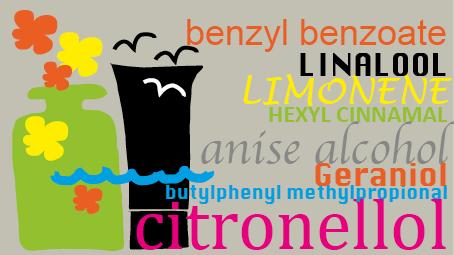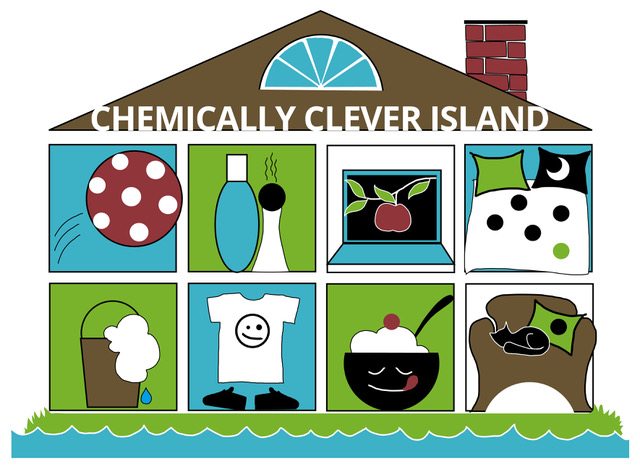Decode the table of contents

How do you know if the jars and tubes in your bathroom contain healthy or hazardous substances? Buy eco-certified products! Or remember what ingredients you do NOT want.
In the EU, all cosmetic products should have a declaration of content, the so called INCI- list (International Nomenclature Cosmetic Ingredient). But do consumers understand what they are reading?
Conventional cosmetics
Conventional cosmetics are mostly made of synthetic raw materials: substances made by man. These substances are often declared in English. The great advantage of synthetic ingredients, according to its advocates, is that they are easy to control or change.
Natural cosmetics
Natural cosmetics are often declared by their latin names. Natural substances are friendlier to both nature and man. Many people intolerant to preservatives or synthetic fragrances do tolerate natural cosmetics better.
The ingredients on top of the list
The ingredients on top of the list often represent 90% of the content. Which ingredients do you really want to pay for? A cheap shampoo in economy pack might be diluted with more water (Aqua) than the more expensive bottle, and contain more thickener to get the right creamy consistency anyway. Ingredients representing less than one percent of the product may be mentioned in random order at the end of the list. This means that the manufacturer can put an exclusive ingredient higher on the list than it deserves, even if there is only a tiny little bit of it in the product you buy.
The EU has no rules for eco-cosmetics
Decorative flowers and leafs or words like ”natural” or ”organic” on the bottle doesn’t necessarily mean a thing when it comes to cosmetics. Products certified with eco labels like the Swan, Cosmos Organic, Natrue or EU Ecolabel have however been tested and controlled. Certification might be too expensive to small manufacturers. Without the ecolabelling you either need to have the knowledge yourself, or trust your retailer.
Mineral oil
Mineral oil is extracted from crude oil and a residue from the petrol industry. It can be found in almost all conventional cosmetics. It forms a protective film on the skin, but the softness is very temporary and as the skin dries you need to put on more. Mineral oil is the cosmetic manufacturers’ best friend: it is cheap, easy to work with, has no own scent and doesn’t become ransid. However, some allergic individuals tolerate these oils better than plant oils.
This is what you might read on the inci-list:
- mineral oil
- paraffinum liquidum
- paraffinum
- vaselin
- paraffin
- oleum petrolen
- oleum vaselini
- petrolatum
- cera microcristallina etc.
Perfume
Perfume is found in most hygiene and cosmetic products, and need not be mentioned in more detail than ”perfume”. Exceptions to the rule are the 26 most allergenic fragrances, if they exceed a certain amount. Synthetic perfume mixes can contain endocrine disruptive phthalates to make the scent last longer. Treatment plants have problems decomposing all the perfume we let out.
This is what you might read on the inci-list:
- perfume
- amylcinnamyl alcohol
- benzyl benzoate
- cinnamal
- coumarin
- geraniol
- hydroxycitronekal
- limonene
- linalol etc.
Surfactants
Surfactants are good at cleaning since they are both water-soluble and dissolve fat. There are different kinds of surfactants with different properties, and one product can contain several different surfactants. Sodium lauryl sulfate, SLS, is cheap and foams well; something we as customers usually like. Unfortunately it also dries the skin and the scalp and has to be balanced by other chemicals. Sodium laureth sulfate, SLES, is also common. It is skin irritant and can contain remains of carcinogenic substances. Natural cosmetics usually contain milder sugar surfactants (glucosides). Traditional soap is not considered environmentally hazardous.
This is what you might read on the inci-list:
- sodium lauryl sulfate
- sodium laureth sulfate
- cocoamidopropyl betain
- cetyl trimethyl ammonium chloride
- 'cocoamide DEA etc.
Preservatives
Preservatives make sure that the products fill the bill even though bottles and jars are transported across the world, may wait on the store shelf for a long time and then stay maybe even longer in some bathroom cabinet. Some preservatives are suspected to be endocrine disruptive or carcinogenic (like some of the very common parabens), others are strongly allergenic (like kathon, recognized by names with ”zolin” in them) or are toxic to aquatic organisms.
This is what you might read on the inci-list:
- isobutylparaben
- butylparaben
- propylparaben mfl
- MDBGN
- methylchloroisothiazolinone
- methylisothiazolinone.
